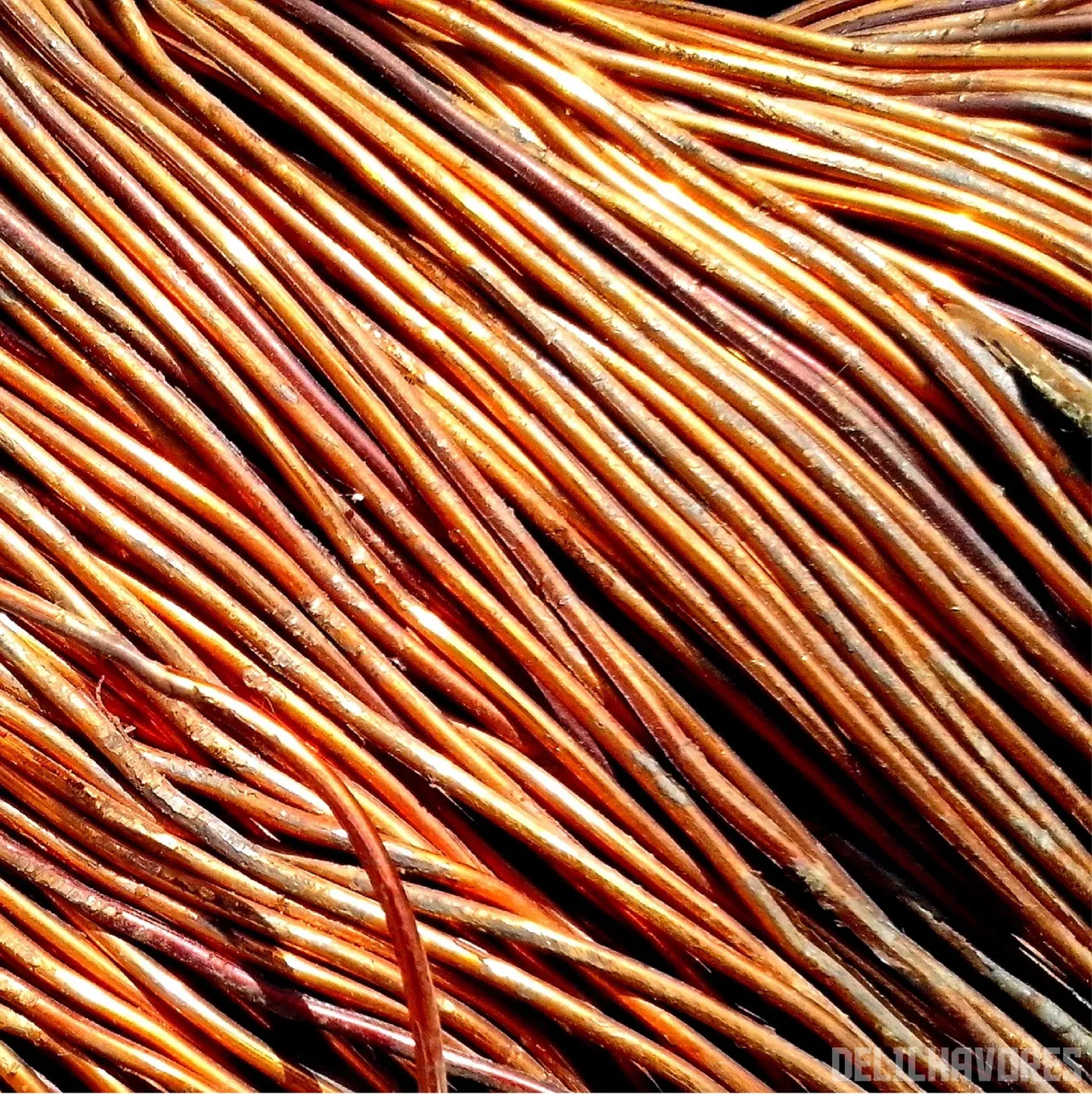Introduction
Copper is the chemical element with atomic number 29 and its symbol is Cu (from "Cuprum"). It can be found in three oxidation states: 0, +1 and +2.
It is a medium oxidizing metal and dissolves in oxidizing acids such as HNO3. The cuprous species is stable only in insoluble compounds or in complexes because in solution it tends to disproportion:
2Cu + <--> Cu + Cu2+
The cupric cation tends to give complexes to coordination number = 4.

Biologic interactions
Cu is classified as an essential and stimulating trace element and the average quantity in the body is around 75-150 mg. It is taken by food, it is contained in liver, mushrooms, spinach and artichokes.
It is absorbed in the intestine and is transported in the blood by a specific protein called ceruloplasmin.
The main biological function of Cu +/Cu2+ is that of constituent of enzymes:
- Cytochromes C: They are part of the cellular respiratory chain (in the mitochondria);
- Lysine oxidase: Controls the elasticity of aortic walls;
- Tyrosinase: Pigmentation of the skin, activated by UV, is found in the epidermis;
- Copper oxidase: Biosynthesis of collagen;
- Superoxide-dismutase: Decomposes superoxide radicals.
Other biological roles are in iron metabolism, in the biological activation of histamine, in steroid hormones and in the biosynthesis of prostaglandins.
The therapeutic use is based on the antiseptic and astringent properties possessed at low concentrations by the Cu2+ ion and attributable to the reactivity towards the SH protein and enzymatic groups. At higher concentrations (1%) there is emetic and irritating action on the mucous membranes.
Due to its ability to break cell membranes it can cause hemolysis (rupture of red blood cells) resulting in jaundice and hemoglobinemia.
The detoxification is carried out with penicillamine, dimercaprol and CaNa2EDTA.
Cuprous compounds have no therapeutic application because of their toxicity. Some Cu salts present a teratogenic and carcinogenic action. Cu2+ is used in case of phosphorus poisoning, thanks to its ability to oxidize it to phosphate.

Compounds of pharmaceutical interest
In Pharmacopoeia we can find:
- Copper sulphate: It is used as an astringent, antiseptic for ophthalmic use and as an antianemic adjuvant. Also used in the agricultural field as an anti-cryptogamic, molluscicide and antischistosomiac.

Analytic reactions
For the recognition of copper we can rely on the following chemical reactions:
- A solution containing Cu2 + in medium-acid solution becomes intensely blue colored by addition of NH4OH:
[Cu(H2O)4]2+ + 4NH3 <-> Cu(NH3)42+ + 4H2O - Cupric salts react with potassium ferrocyanide to give a brick-red precipitate of potassium and copper ferrocyanide:
Cu2+ + 2K+ + [Fe(CN)6]4- <-> CuK2[Fe(CN)6] - Precipitates as black sulphide at acid pH:
- Cu2+ + S2- --> CuS
The sulfide is soluble in HNO3:
3CuS + 2NO3- + 8H+ --> 3C2+ + 3S + 2NO + 4H2O
ITA
Introduzione
Il rame è l'elemento chimico di numero atomico 29 e il suo simbolo è Cu (da “Cuprum”). È possibile trovarlo in tre stati di ossidazione: 0, +1 e +2.
È un metallo mediamente ossidante e si scioglie in acidi ossidanti come HNO3. La specie rameosa è stabile solo nei composti insolubili o nei complessi in quanto in soluzione tende a disproporzionare:
2Cu+ <-> Cu + Cu2+
Il catione rameico tende a dare complessi a numero di coordinazione = 4.

Interazioni biologiche
Il Cu è classificato oligoelemento essenziale e stimolatorio e la quantità media nell’organismo è intorno a 75-150 mg. Viene assunto per via alimentare, è contenuto in fegato, funghi, spinaci e carciofi.
Viene assorbito a livello intestinale e viene trasportato nel sangue da una proteina specifica detta ceruloplasmina.
La principale funzione biologica di Cu+/Cu2+ è quella di costituente di enzimi:
- Citocromi C: Fanno parte della catena respiratoria cellulare (nel mitocondrio);
- Lisina ossidasi: Controlla l’elasticità delle pareti aortiche;
- Tirosinasi: Pigmentazione della pelle, attivato da UV, si trova nell’epidermide;
- Rame ossidasi: Biosintesi del collagene;
- Superossido-dismutasi: Decompone i radicali superossido.
Altri ruoli biologici sono nel metabolismo del ferro, nell’attivazione biologica di istamina, negli ormoni steroidei e nella biosintesi delle prostaglandine.
L’impiego terapeutico si basa sulle proprietà antisettiche e astringenti possedute a basse concentrazioni dallo ione Cu2+ e riconducibili alla reattività verso i gruppi SH proteici ed enzimatici. A concentrazione più elevate (1%) si ha azione emetica e irritante sulle mucose.
Per la sua capacità di rompere le membrane cellulari può provocare emolisi (rottura dei globuli rossi) con conseguente ittero e emoglobinemia.
La detossificazione si esegue con penicillammina, dimercaprolo e CaNa2EDTA.
I composti rameosi non trovano applicazione a terapeutica causa della loro tossicità. Alcuni sali di Cu presentano azione teratogena e cancerogena. Cu2+ è utilizzato in caso di avvelenamento da fosforo, grazie alla capacità di ossidarlo a fosfato.

Composti di interesse farmaceutico
In Farmacopea possiamo trovare:
- Rame solfato: È usato come astringente, antisettico per uso oftalmico e come coadiuvante antianemico. Utilizzato anche in campo agricolo come anticrittogamico, molluschicida e antischistosomiaco.

Reazioni analitiche
Per il riconoscimento del rame ci si può basare sulle seguenti reazioni chimiche:
- Una soluzione contenente Cu2+ in soluzione medio-acida diviene colorata intensamente di blu per aggiunta di NH4OH:
[Cu(H2O)4]2+ + 4NH3 <-> Cu(NH3)42+ + 4H2O - I sali rameici reagiscono con potassio ferrocianuro per dare un precipitato rosso mattone di ferrocianuro di potassio e rame:
Cu2+ + 2K+ + [Fe(CN)6]4- <-> CuK2[Fe(CN)6] - Precipita come solfuro nero a pH acido:
Cu2+ + S2- --> CuS
Il solfuro è solubile in HNO3:
3CuS + 2NO3- + 8H+ --> 3Cu2+ + 3S + 2NO + 4H2O
